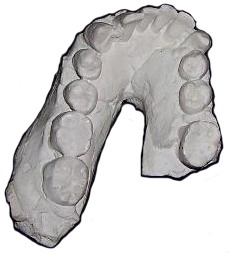
For more information, click here. Or, Try these sources:
- Lieberman, Daniel E.; Wood, Bernard A.; Pilbeam, David R. (1996). "Homoplasy and early Homo: an analysis of the evolutionary relationships of H. habilis sensu stricto and H. rudolfensis" (PDF). Journal of Human Evolution. 30: 4–6. doi:10.1006/jhev.1996.0008. Can be read here.
OH 7 (Olduvai Hominid № 7), also nicknamed "Johnny's Child", is the type specimen of Homo habilis. The fossils were discovered on November 4, 1960 in Olduvai Gorge, Tanzania, by Jonathan and Mary Leakey. The remains are dated to approximately 1.75 million years, and consist of fragmented parts of a lower mandible (which still holds thirteen teeth, as well as unerupted wisdom teeth), an isolated maxillary molar, two parietal bones, and twenty-one finger, hand, and wrist bones. The OH 7 hand is wide, with a large thumb and broad fingertips, similar to that of humans; however, unlike in humans the fingers are relatively long and exhibit chimpanzee-like curvature. Furthermore, the thumb's orientation relative to the other fingers resembles the anatomy of great apes. The parietal bones — a nearly complete left parietal and fragmented right parietal — were used to deduce the cranial capacity of the hominid, which was placed at 663 cc in account of the fact that the fossils belonged to a 12- or 13-year-old male. This was extrapolated by Phillip Tobias to 674 cc for the hominid's full adult potential. However, other scientists have estimated the cranial capacity at 590 cc to 710 cc.
- Leakey, Louis; Tobias, Phillip V.; Napier, John Russell (1964). "A New Species of the Genus Homo from Olduvai Gorge" (PDF). Nature. 202 (4927): 7–9. Can be read here.
- Holloway, Ralph L. (1966). "Cranial capacity of the Olduvai Bed I hominine". Nature. 210 (5041): 1108–1109. Bibcode:1966Natur.210.1108H. doi:10.1038/2101108a0. Can be read here.